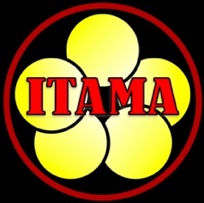
Karate-do,
the “way” of the empty hand, is much more than just
learning the various ways of kicking, punching and blocking.
Karate should be an art of training the mind as well as the body. Many
seem to associate the results of Karate training with the flashy
movements of martial arts movies. These movies usually present no
evidence that good Karate training requires effort, dedication, mental
and philosophical training for the character building of the
individual. Karate becomes a complete training program when the
tenants, values, philosophies, and etiquette of Karate-do are taught
and learned. Also, Karate must be taught as a way of self-defense.
The “empty” of empty/hand means to empty oneself of bias, negative
attitudes and ego. It is what is known as the destruction of self or
ego. After this is accomplished one can fill themselves with proper
attitude, respect and the seven tenants of success in Bushido:
Patience, sincerity, integrity, humility, wisdom, courage,
brotherhood/loyalty.
We must also learn to be temperate and let Karate-do be a positive
force in our lives. Once this discipline becomes a positive force in
our lives, it will improve our attitude towards others and ourselves.
Karate-do then can becomes a “way of life.”
Training includes the development of mind, body and the person as a
whole.
The mind: Teaches the student the mental and philosophical elements of
Karate. This includes learning the history, principles, and some of the
Japanese language.
The body: Teaches the student the physical aspects of Karate and why we
do what we do. In other words, Kata or forms, which includes various
blocking, kicking, striking and grappling elements.
The person: To enhance the student’s self-esteem and increase his or
her sense of self-worth. Not to inflate their ego. We accomplish this
by:
• Building the student’s
confidence in his or her own abilities, not by
creating false modesty or expanded ego. Ego will give us a false sense
of superiority. One of the prime goals of proper training is the
“destruction of self” or the ego. This is in accord with the goals of
the ancient masters of our art.
• Creating a more orderly life through the development of both
self-discipline and self-control. Through self-discipline and
self-control the student learns the importance of yet another virtue,
which is patience.
• Giving the student goals to achieve that will not only aid their
progress in the training hall, but during their journey through life.
• Building character by means of learning the importance of honesty
and integrity not to mention courage and it’s relationship to warrior
bearing and stature.
• Creating a humble and benevolent spirit. We must have compassion for
others and lend a helping hand to those in need.
• Developing a better attitude towards our fellow man. Class etiquette
cultivates a respective attitude both in and out of the training hall.
Each of these qualities is equally important and cannot be separated as
each depends on the other to create proper development of the Karate-do
student. The Sensei requires that all students set a good example for
other martial artists.
Karate is a means of self-defense. Fighting should always be used as a
last resort. When students lose their tempers and lash out with
physical aggression, it brings dishonor not only to the person engaged
in such activities, but also to the school and the teacher.
G.A. Mollett—6th Dan Shrorin-ryu
Circa. 1985
For more information, you may send an email to
Jason Hasse Sensei at
hassekarate@yahoo.com.
Hasse
Sensei's Classes Meet:
|
| Saturday |
11:00am
- Noon
|
| Sunday |
11:00am
- Noon |
|

